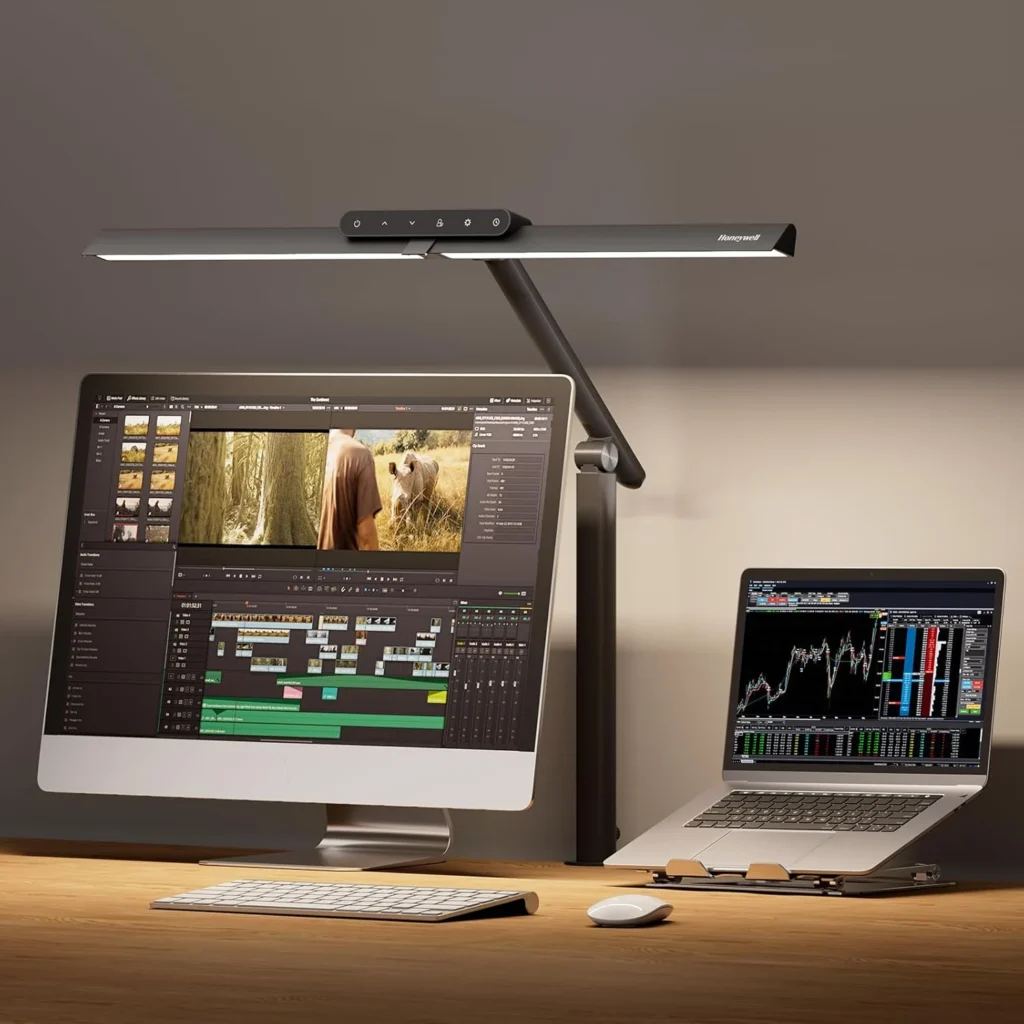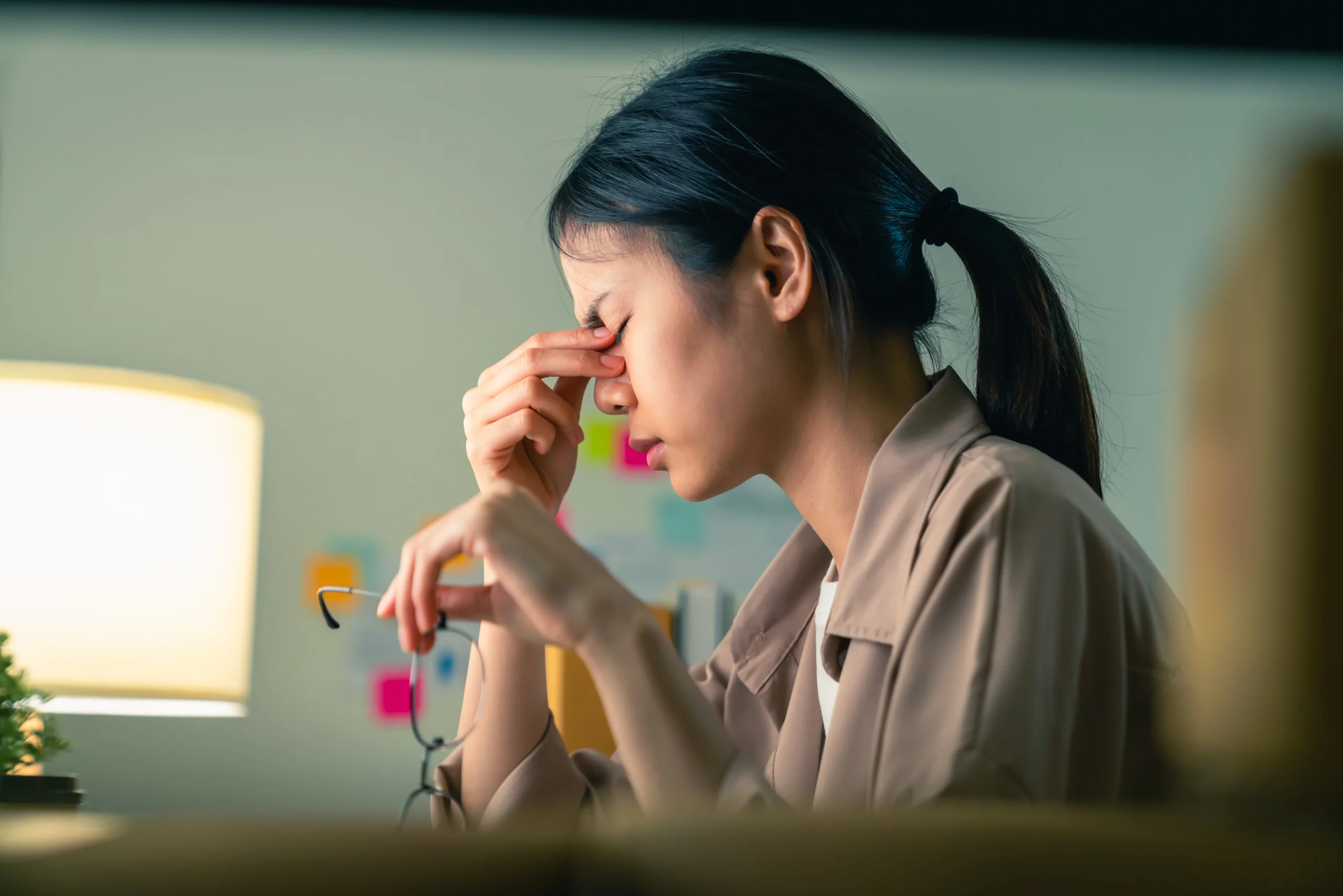Disclaimer: This article is for informational purposes only and is based on general wellness practices and personal experience. It is not intended to diagnose, treat, cure, or prevent any condition. Always consult with a healthcare professional if you have concerns about your eye health.
If you’ve ever struggled with the discomfort of long hours spent staring at screens, then you know it’s more than just a mild annoyance. I found myself dealing with the constant headaches, dry eyes, and neck tension that came with computer vision syndrome, and let me tell you, it was draining. The more I worked and gamed, the worse it got. I realized something had to change.
Over time, I discovered a few simple adjustments and tools that really made a difference. These weren’t instant fixes, and they’re definitely not a substitute for professional care, but they’ve become a key part of my routine. Now, I can spend my time in front of the screen without the constant discomfort that once plagued me.
So if you’re facing the same struggle, keep reading! I’ve got some solutions that might help.
What Is Computer Vision Syndrome?
Computer Vision Syndrome (CVS) refers to the discomfort caused by prolonged screen time. It includes symptoms like dry eyes, blurry vision, headaches, and neck or shoulder pain. Though these issues might seem minor, they can worsen if not addressed.
What Causes Computer Vision Syndrome?
Several factors contribute to CVS, many of which can be managed with simple changes:
- Prolonged Screen Time
Staring at digital screens for long periods strains your eyes, as they have to work harder to focus. - Poor Posture
Bad posture while working or gaming can cause neck and shoulder tension, worsening CVS symptoms. - Improper Lighting
Glare and harsh lighting can force your eyes to strain, contributing to discomfort. - Blue Light Exposure
Screens emit blue light, which can contribute to eye strain over time. - Dry Eyes
Reduced blinking while staring at a screen can lead to dry, irritated eyes.
Understanding these causes can help prevent CVS, and simple adjustments can provide relief.
Our 3 Favorite Solutions to Ease Computer Vision Syndrome
Let me be clear: these aren’t instant fixes, but they’ve seriously helped me manage the discomfort I was feeling. Over time, they’ve become part of my daily routine, and they’ve made a big difference in reducing the strain on my eyes and body.
1. Relieve Computer Vision Syndrome with Blue Light Protection 👓
After trying a few options, Prospek Blue Light Glasses were thAnother tool that made a noticeable difference for me was blue light blocking glasses. When you’re staring at a screen for hours, the blue light can mess with your eyes and your sleep cycle—both of which play a role in Computer Vision Syndrome. Even with good lighting, I still felt tension in my eyes by the end of the day.
I started using the Prospek Blue Light Glasses (which I reviewed), and they’ve become a part of my daily setup. They block high-energy blue light while keeping the color distortion minimal, so I don’t feel like I’m wearing sunglasses indoors. Over time, I noticed fewer headaches, less squinting, and just more visual comfort overall.

2. Eye Drops – Instant Relief for Dry Eyes 💧
Another game-changer: preservative-free artificial tears.
Since we blink less when using screens, our eyes don’t stay lubricated naturally. I use drops 2–3 times a day—usually mid-morning and again around 5 PM when my eyes feel tired.
It’s quick, easy, and makes a huge difference, especially if you work in an air-conditioned room.
📌 Pro Tip: Go with preservative-free versions to avoid long-term irritation.
3. Better Lighting for Less Eye Strain 💡
One of the easiest and most overlooked ways to manage Computer Vision Syndrome is by improving your lighting. Harsh overhead lights, dim environments, or screen glare can all contribute to eye fatigue, especially when you’re working or gaming for long stretches. Using the right kind of lighting reduces strain, enhances contrast, and helps your eyes stay more relaxed throughout the day.
One product I reviewed and now use daily is the Honeywell LED Desk Lamp with Clamp. It mimics natural sunlight with uniform, flicker-free lighting and a high color rendering index, which makes it easier on the eyes. I noticed a big difference in how my eyes felt during long work sessions after switching to this lamp—less dryness, fewer headaches, and better focus. It’s now a must-have on my desk.

Bonus: Tiny Habits That Help More Than You’d Think
Even with the right gear, habits make a difference. Here’s what’s stuck with me:
- The 20-20-20 Rule: Every 20 minutes, look at something 20 feet away for 20 seconds. Set a reminder—I do this during loading screens or while my coffee brews.
- Position your monitor about an arm’s length away, with the top at or just below eye level.
- Adjust your screen brightness to match your environment—too bright or too dim both cause strain.
- Don’t skip breaks. Seriously. I used to power through, but short walks or even just standing up every hour has helped my focus and posture a lot.
Final Thoughts
I’ve come to realize that taking care of your eyes isn’t just about avoiding discomfort—it’s about showing up better in every area of life. When your eyes feel good, you focus better, sleep deeper, and just feel more energized.
For me, that meant:
- Wearing blue light glasses daily
- Keeping eye drops within reach
- Upgrading my lighting for real comfort
If you’re spending hours a day in front of a screen (especially if you’re grinding through work and gaming like I was), give your eyes the support they need. These tools helped me stay sharp, comfortable, and focused—and I hope they do the same for you.

